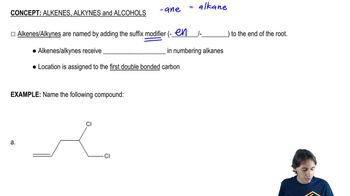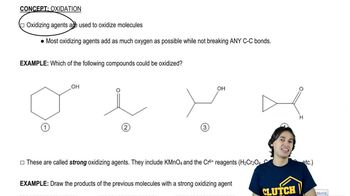How could the following compounds be synthesized from acetylene?
c. CH3CH═CH2
 Verified step by step guidance
Verified step by step guidance Verified video answer for a similar problem:
Verified video answer for a similar problem:



 3:25m
3:25mMaster Predict the major product. with a bite sized video explanation from Johnny
Start learning